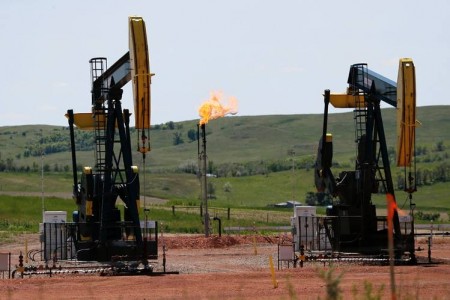March 11, 2016 – This week U.S. President Obama and Canadian Prime Minister Trudeau announced a collective emission reduction target for methane gas (CH4) coming from the oil and gas sector. The goal is to cut emissions below 2012 levels by 40 to 45% and to do this by 2025.
This begs the question, why methane and not carbon dioxide?
The latter accounts for 82% of all greenhouse gases emitted from human sources in both countries. So methane is a junior partner as global-warming gases go. In fact it accounts for approximately 10% of all atmospheric warming emissions. Tackling 9% of the problem then doesn’t sound like much of an effort in fighting the causes of climate change. And tackling it from the perspective of the oil and gas sector represents a subset of total methane emissions.
What is the largest source of human methane emissions?
It is not the fossil fuel industry. It comes from the food we put on our plates and the farms that produce it. According to the U.S. Environmental Protection Administration, livestock and livestock waste emissions represent 36% of all methane emissions whereas natural gas and oil production produce 30%. But the President and Prime Minister in their announcement mentioned not a word about agriculture methane reductions.
How much does methane contribute to global warming when compared to carbon dioxide?
Methane produces 100 times more atmospheric heat than carbon dioxide and it does this in the first 5 years after entering the atmosphere. Over a century its total heat trapping impact is 25 times greater than carbon dioxide. But in 10 years methane breaks down so its impact is short lived.
Tackling methane emissions, therefore, is all about the short term whereas hand tackling carbon dioxide may not yield discernible climate change results for decades. Maybe that’s why the President and Prime Minister chose to announce a methane reduction strategy with a hope that reductions would lessen global warming trends.
So why target the fossil fuel industry?
Probably because it is the easier methane challenge to fix. The Porter Ranch leak in California over four months represented the worst methane leak in American history. Some 97,100 metric tons of the gas entered the atmosphere. That is equal to the warming effect produced by 572,000 automobiles over one year.
According to Thomas Ryerson, a chemist with the U.S. National Oceanic and Atmospheric Administration, “Almost every time you have hydrocarbon production and infrastructure you can measure leaks out of them.” At every step of the process from exploring to refining to piping natural gas to customers there is methane finding its way into the atmosphere.
So in natural gas production many mini Porter Ranches are out there releasing lots of gas from production to consumption. And when you consider the last decade in which hydraulic fracturing has opened up new sources of natural gas supply methane has become a much more contentious greenhouse gas problem. It’s everywhere leaking from wellheads, pipelines, storage tanks and rail cars.
Creating regulations to enforce emission cuts would be in addition to new rules being released to cut wellhead emissions. It is not surprising that the industry feels they are unfairly being singled out for their methane contribution. Kyle Isakower of the American Petroleum Association, in response to the announcement stated, “Additional regulations on methane by the administration could discourage the shale energy revolution that has helped America lead the world in reducing emissions while significantly lowering the costs of energy to consumers.” When you consider that agriculture is by far the largest methane emitter you can understand to some degree Isakower’s remark.
In the industry’s favour, between 2005 and 2012 oil and natural gas production decreased methane emissions by 15%. But this success is believed to be short lived because the fracking energy boom is expected to increase emissions by as much as 25% by 2025. It is, therefore, a logical target for the President to address. Is it equally logical for the Prime Minister?
In Canada Alberta is the primary industrial methane emitter largely from venting of natural gas sources. The government of Alberta has already pledged to reduce methane emissions from oil and gas operations by 45% so the Prime Minister in agreeing to meet the President’s commitment is restating Alberta policy.
What’s still missing?
Tackling agricultural methane emissions, a much more difficult challenge. And of course establishing mutual national carbon dioxide reduction targets through the application of a carbon tax and other carbon mitigating policies.
And finally the unknown natural methane challenge of melting permafrost will run its course as the Arctic increasingly warms.











